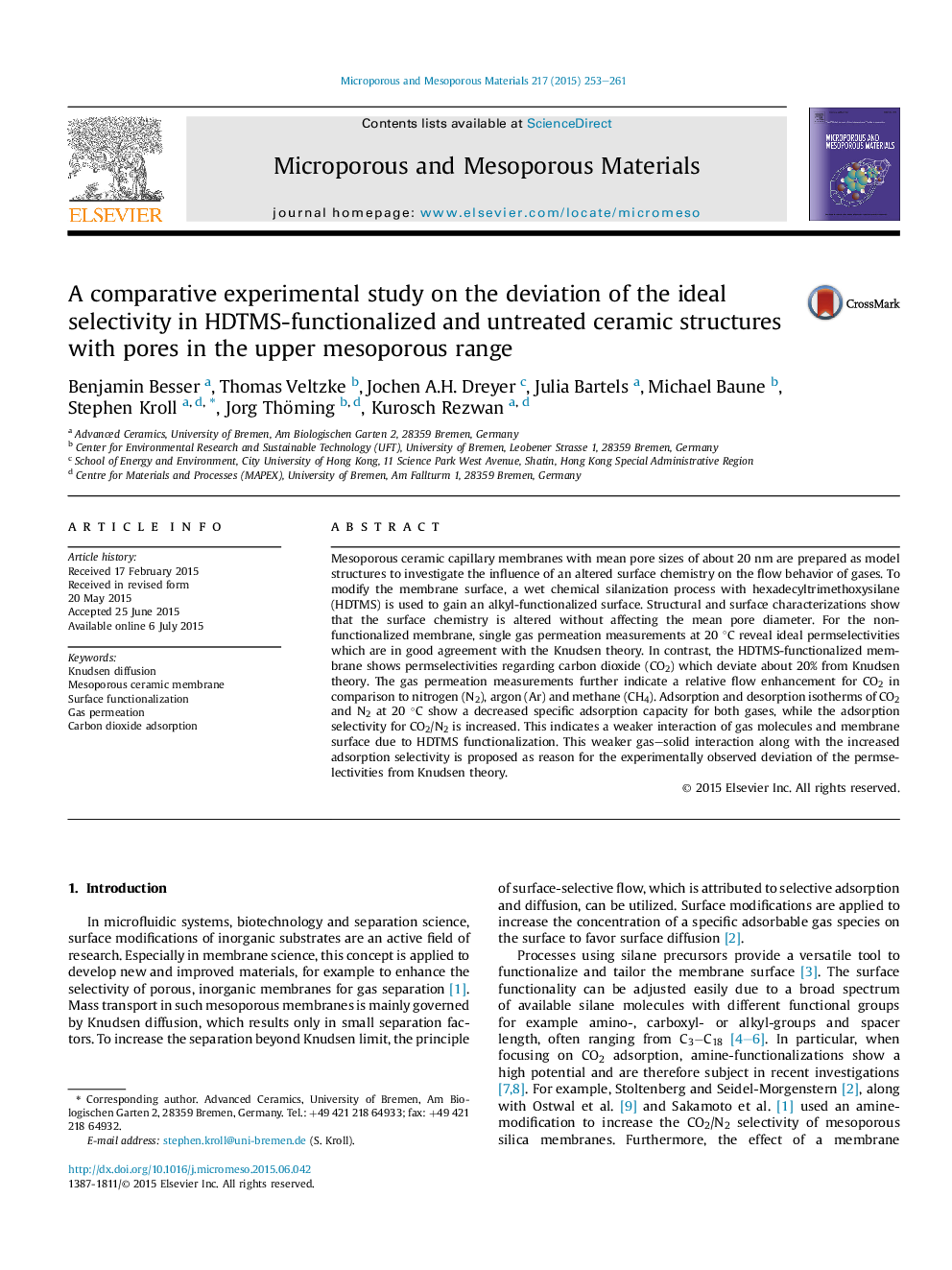| Article ID | Journal | Published Year | Pages | File Type |
|---|---|---|---|---|
| 72374 | Microporous and Mesoporous Materials | 2015 | 9 Pages |
•Surface modification with HDTMS without affecting the mean pore diameter.•HDTMS surface modification can be quantified by TGA and TC measurements.•Membranes with HDTMS-functionalization show differing ideal selectivities.•CO2 and N2 adsorption capacities are decreased due to HDTMS functionalization.
Mesoporous ceramic capillary membranes with mean pore sizes of about 20 nm are prepared as model structures to investigate the influence of an altered surface chemistry on the flow behavior of gases. To modify the membrane surface, a wet chemical silanization process with hexadecyltrimethoxysilane (HDTMS) is used to gain an alkyl-functionalized surface. Structural and surface characterizations show that the surface chemistry is altered without affecting the mean pore diameter. For the non-functionalized membrane, single gas permeation measurements at 20 °C reveal ideal permselectivities which are in good agreement with the Knudsen theory. In contrast, the HDTMS-functionalized membrane shows permselectivities regarding carbon dioxide (CO2) which deviate about 20% from Knudsen theory. The gas permeation measurements further indicate a relative flow enhancement for CO2 in comparison to nitrogen (N2), argon (Ar) and methane (CH4). Adsorption and desorption isotherms of CO2 and N2 at 20 °C show a decreased specific adsorption capacity for both gases, while the adsorption selectivity for CO2/N2 is increased. This indicates a weaker interaction of gas molecules and membrane surface due to HDTMS functionalization. This weaker gas–solid interaction along with the increased adsorption selectivity is proposed as reason for the experimentally observed deviation of the permselectivities from Knudsen theory.
Graphical abstractFigure optionsDownload full-size imageDownload as PowerPoint slide
